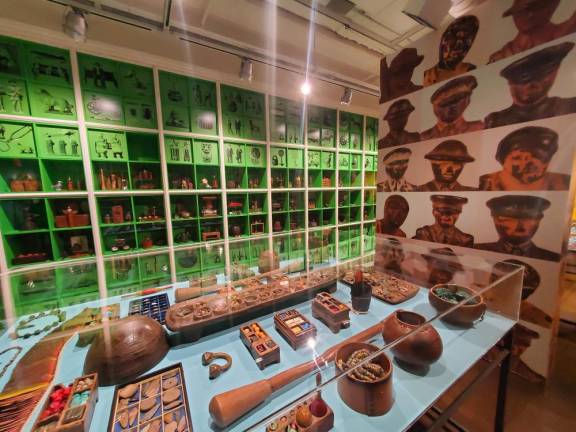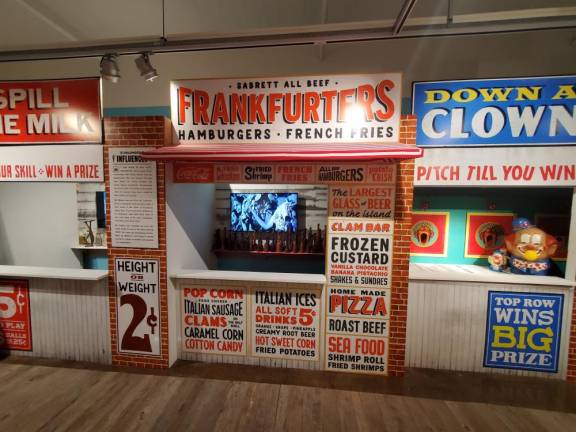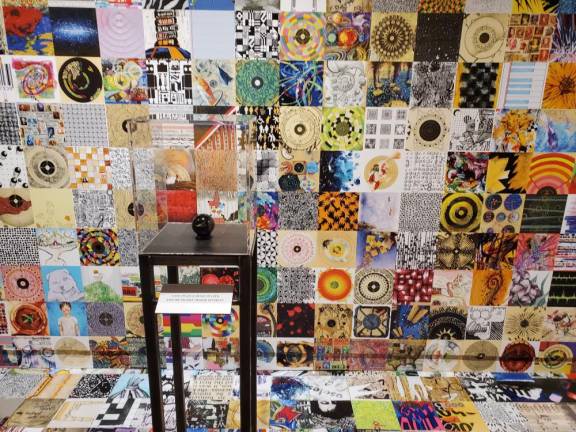Exploring a Wilde-ly Creative Legacy
A new exhibit at the School of Visual Arts showcases the work of Richard Wilde, a legendary design world figure who founded the BFA Design department in the 1970s, has written several books on design, won more than 150 design-related awards, and taught at SVA for 50 years.
Walking into “Wilde Mind,” one is first greeted by a large introductory quotation from Richard Wilde, the first of many words of the award winning designer to appear throughout the exhibition which focuses on the life and legacy of the inaugural chair of the BFA Design Department at the School of Visual Arts.
He taught at SVA for 50 years and instructed an estimated 10,000 students.
In this first quote, he explains the intent of the exhibition: to bring others into his thought process. Wilde explains that his dyslexia, once debilitating, became a gift for him, allowing him to see and interpret symbols in ways that do not occur to most.
“What is of greater value than what is seen is the state of openness allowing for new impressions to arise,” Wilde wrote. “For students to experience this state of openness became my modus operandi in creating challenging conditions through innovative assignments.”
The school held its opening reception at SVA’s Chelsea Gallery on West 26th Street on the evening of Thursday, November 2. The exhibition, which features thousands of objects and items from Wilde’s personal collection alongside works of art both by Wilde and many of his students, traces his life from his childhood in World War II-era Brooklyn to his 50 years of teaching at SVA, from 1969 until his retirement in 2019. “Wilde Mind” is open to the public through Saturday, December 9.
The fifteenth-floor gallery space is divided into four main sections, each representing a different aspect of Wilde. The exhibit, which was designed and curated by Kevin O’Callaghan, the chair of SVA’s 3D Design program, is packed with a kaleidoscopic array of items, from photos to posters to books to trinkets, coming together to paint a picture of, as the exhibition’s name suggests, Wilde’s mind, giving attendees a look inside decades of creativity.
Past the opening signage, brightly painted faux storefronts transport attendees to Wilde’s childhood in midcentury Coney Island. Signs advertise food, fun, and games, as a jukebox rotates through a selection of classic rock tunes with “wild” in their title. A quotation from Wilde affixed to the wall notes that the colorful, often-illuminated signage at Coney Island served as an early inspiration for him. Alongside an array of vintage photographs, another placard features words from Wilde describing his formative childhood memories of spending summers at Sea Gate Beach, opening his imagination to nature and new forms of creativity.
In halls connecting the exhibition’s main rooms, we see some of Wilde’s works. On one wall, his childhood drawings, preserved by Wilde’s mother, are magnified and hung up. The bold, colorful drawings hint at the creativity that would flourish in Wilde as he grew up.
“To this day, I still have glimpses of the freedom I had as a child, when creating these first paintings and drawings, and later on an essence connection to this which became a charge in my teaching for students to reclaim this condition of spontaneity and openness,” Wilde’s words read.
Perhaps the most impressive section of the exhibition is its central room. Everywhere you look, innumerable trinkets collected by Wilde are on display, filling cases that cover the entire span of the walls, laid out across massive tables, and blown up to larger-than-life scale in large photographs. Many are arranged in sculptural formations or carefully laid out in cabinets, becoming art in themselves. These items span a remarkably diverse range of types, from board game pieces to jewelry to loose doorknobs. Another quotation from Wilde explains the mindset behind his lifelong passion for collecting.
“As the offspring of parents who lived through the Depression and were traumatized by their knowledge of the Holocaust, I suffer from intergenerational trauma, a transference of the need to collect and hold on to things,” Wilde wrote. “The various things I collect have become my vocabulary in creating contemporary cabinets and assemblages. In effect, my art found me.”
A display in the rear of the exhibition focuses on another specific aspect of Wilde’s legacy: his time as the chair of SVA’s Advertising Department. Placards on the wall note that through Wilde’s leadership, SVA graduates came to dominate the advertising industry, with SVA alumni taking home more major advertising awards than those of other major art schools combined.
Particularly striking is an array of public service advertisements on display. One, for the American Disability Association, features a view of the stairs out of a subway station, painted with the image of mountains, with plain white text reading “For some, it’s Mt. Everest. Help build more handicap facilities.” Another, for the National Resources Defense Council, features a large image of a revolver on the side of a building, angled so that a smoke-emitting pipe atop the building appears as the gun’s barrel, emphasizing the deadly consequences of air pollution. Perhaps most shocking is one for the national suicide prevention hotline, overlaying the image of a hand and arm across a subway turnstile such that swiping your MetroCard evokes the image of slashing a wrist.
Another room emphasizes Wilde’s impact as a teacher. In his 50 years at SVA, the school says that he taught over 10,000 students. Small squares of artwork by different students cover the floor and walls like a patchwork quilt as we see the dozens upon dozens of ways different students interpreted different prompts and assignments given to them by Wilde. Other works flash by on video screens. The effect is nearly dizzying. Some of the more memorable assignments include visually reinterpreting the front page of the New York Times on the day the Titanic sank and creating, in some form, a portrait of Wilde himself.
“Wilde Mind” will undoubtedly be a more meaningful experience for those who have known Wilde as a teacher, mentor, friend, or colleague, a number the exhibition makes clear is in the 10,000 range. But even for those who don’t know the name Richard Wilde, this exhibition is a rich, fascinating look into one man’s rich creativity, and the generations of artists that creativity helped inspire.


